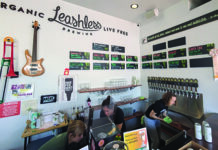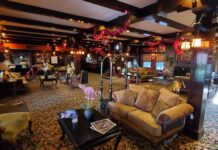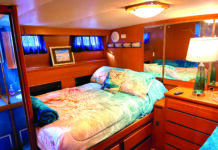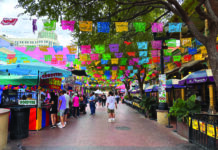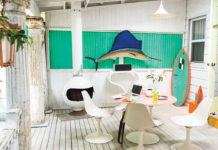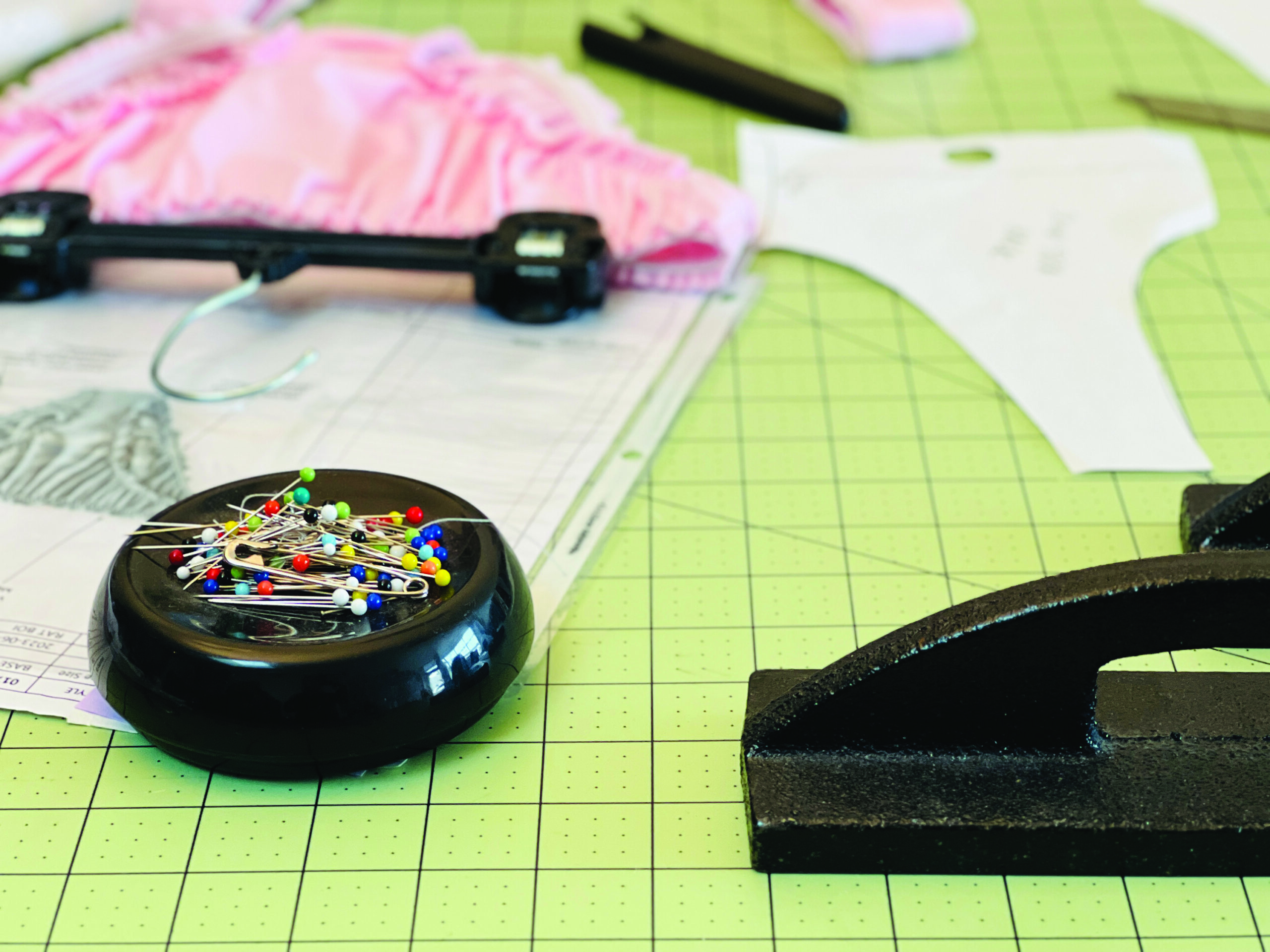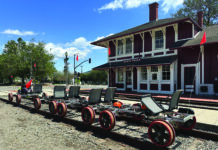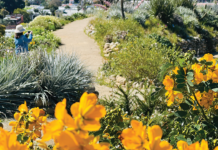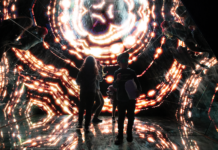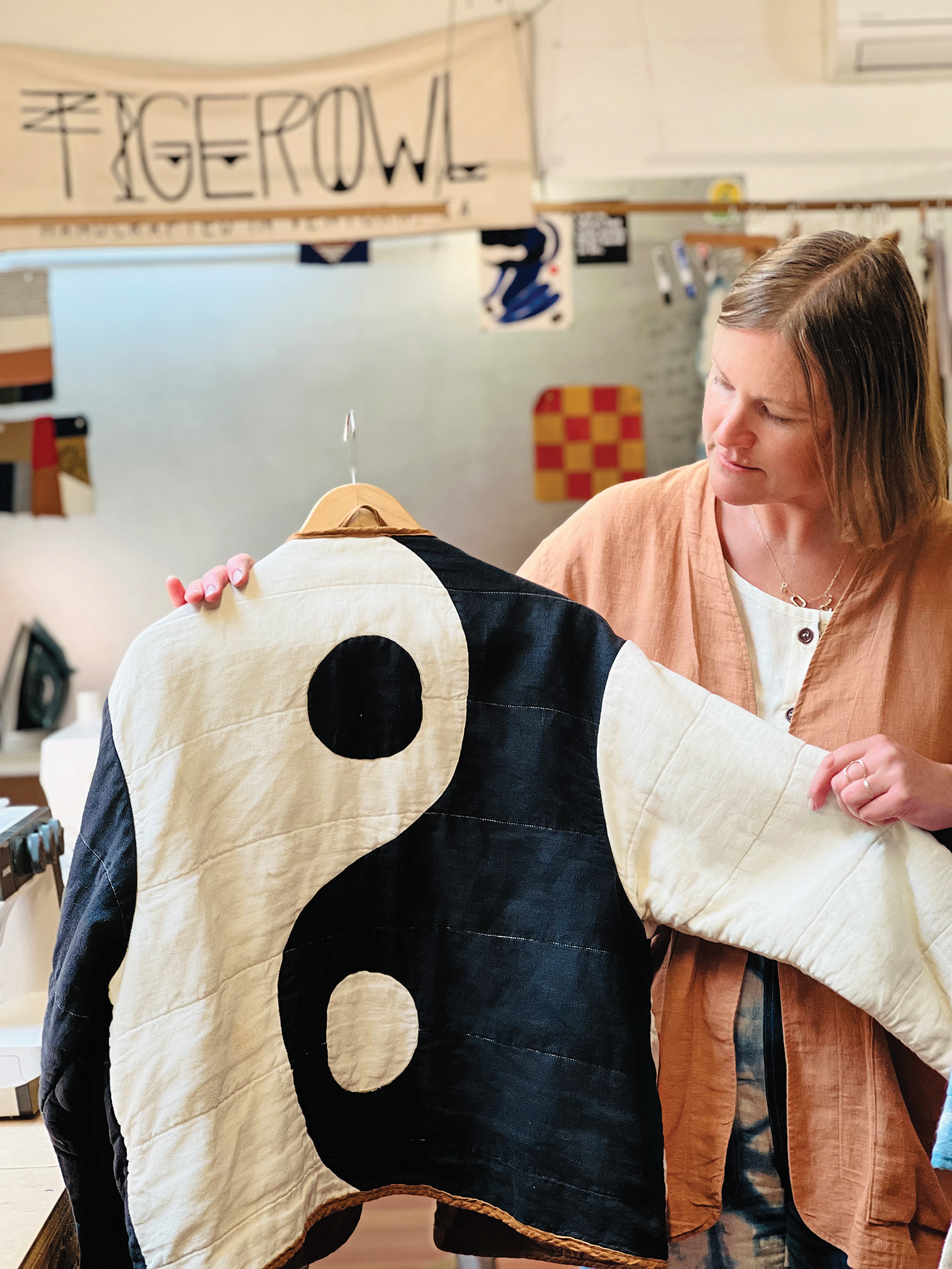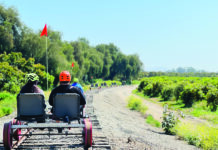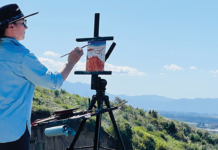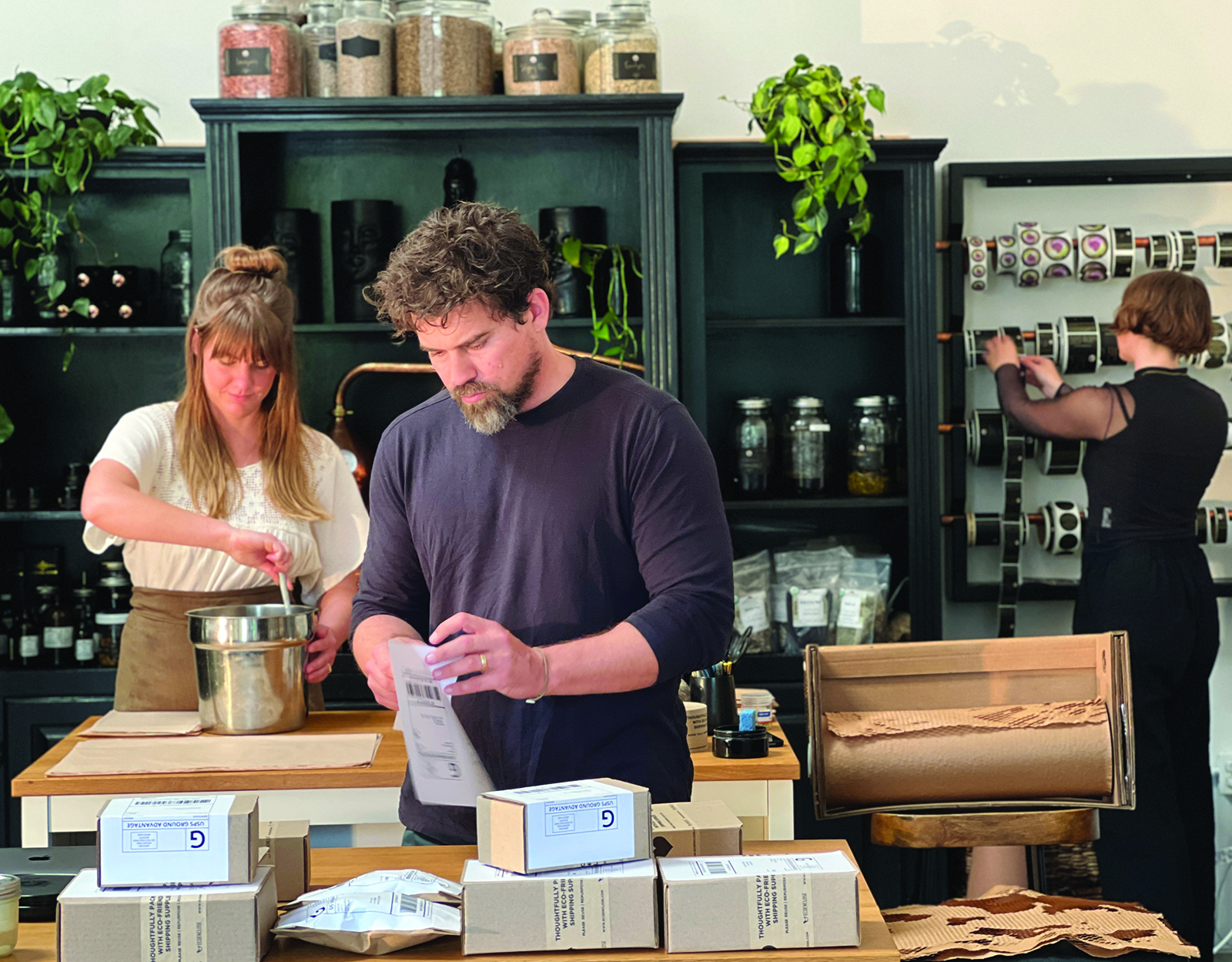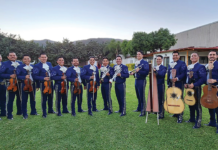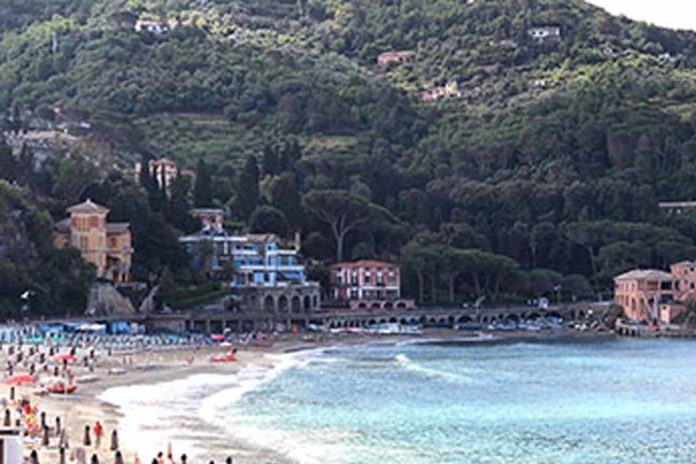

Photo by Janis Nelson
Serene Levanto, a few minutes’ train ride north of busy Cinque Terre, is an ideal place for doing as little as possible.
ity walls, as any current or former resident of Berlin will tell you, do not connote hospitality.
So why would a city surrounded by a wall be an ideal locale to start your Italian vacation?
Because the 2,000-year-old wall surrounding the Tuscan city of Lucca (less than an hour from Florence to the east and the Italian Riviera to the northwest) is among the least imposing and most inviting edifices you’ll find anywhere in the world.
Only 2.5 miles in circumference, it is adorned not by “Keep Out” signs, but by trees and a wide walkway ideal for strolling or bicycling, where you can work off your second (or was it your third?) gelato and marvel yet again at the wonders of a lifestyle that proclaims, “Relax and enjoy!”
Best of all, Lucca is filled with people who smile, welcome and aim to please visitors to their city that has survived a 14th century takeover by Pisa and a 19th century invasion by Napoleon. Today, the only invaders are tourists who bring curiosity, appetites, euros and, especially, the desire to enjoy la dolce vita away from Italy’s more famous (and more crowded) tourist spots.
The walls themselves — fortified during the Renaissance, but still utilizing some of the original brick and rocks — are worth exploring above and below, where a vast network of caves and tunnels once housed soldiers and horses preparing to battle would-be conquerors. Today there are retirees, not conquerors, from France, Germany and Great Britain sprinkled among Lucca’s 88,000 citizens, most of whom populate the “newer” portion of the city outside the walls and above the ground.
But it is the old city within the walls that attracts and delights visitors with its rich history, quirky architecture, unorthodox but easily negotiable street layout, excellent dining and, along and near Via Fillungo, better-than-you-might-expect retail opportunities for the fashion-conscious, especially those seeking items designed by local artists. Lucca’s reputation as a fashion center may not rival Milan’s three hours to the north, but neither do its price tags.
An array of centuries-old churches offers both shade from the summer heat and artistic wonders, like the Romanesque San Frediano and its Byzantine mosaics, and San Michele topped by a winged Archangel Michael. The presence of instrument-toting youth from around the world attests to Lucca’s reputation as an internationally acclaimed center for music instruction.
The home of Lucca’s musical giant, composer Giacomo Puccini, is open for tours, and his legacy is celebrated nightly from April through October with concerts at the nearby Church of San Giovanni. That leaves more than enough time afterwards to enjoy supper in il primo della serata, the shank of the evening, which in Italy lasts from 7 p.m. until midnight.
Dining is the highlight of the day for most Italians. So embrace it like an Italian, whether you dine simply, at a cafe facing Piazza dell’Anfiteatro, or sumptuously, at local favorite Ristorante Giglio near San Giovanni. Start with a glass of chianti or maybe a bright orange spritz (Prosecco, Aperol and soda water with an orange slice), and end with a tiramisu.
Or stop at one of many gelaterias for a cup or cone of the cool, delectable and supremely addictive dessert treat, made from milk and fresh ingredients — less sweet, more creamy and so much better than ice cream. And then join the locals for a passeggiata, or leisurely evening walk, through this marvelous old city, where the only thing walls keep out is traffic.
BEYOND LUCCY
Where is also plenty to do and see away from Lucca, including Florence, Tuscany’s capital 50 miles east; Siena, 90 miles south; and other, often less well-known places which, like Lucca, have much to offer. A sampling:
Pisa: Lucca’s old rival is just 12 miles south, 25 minutes by car or by train (which leaves every 30 minutes). The Leaning Tower is a must-see for most, but you can’t (and shouldn’t) ignore the Baptistery of St. John a few steps away. One might also enjoy the traces of rivalry still present in the (mostly) good-natured comments each city’s people make about the other. (Luccan parents reportedly scare their children by saying, “Hurry, the Pisans are coming.”)
Pistoia: Located 28 miles southeast from Lucca, 40 minutes by car or train, this rather off-the-radar town of 90,000 offers an off-the-radar treasure: the Altar of St. James the Apostle, the oldest silver altarpiece in Italy and among the largest anywhere, located in the 1,000-year-old Cathedral of St. Zeno. Begun in 1287 and featuring some work by the great Renaissance architect Filippo Brunelleschi, this masterpiece of embossed silver sheet serves (in the best Renaissance sense) as a Scripture storybook for the masses.
Porto Venere: Just south of the increasingly-popular Cinque Terre and 56 miles from Lucca is this charming seaside community with an inviting marina, an enticing seaside restaurant in Le Bocche and, a short walk away, the cliffside Church of San Pietro, perched on the rocky shoreline since the 13th century. Porto Venere is also a short bus, ferry or taxi ride from train-accessible La Spezia 10 miles up the coast.
Levanto and Bonassola: Just north of the Cinque Terre is Levanto, a serenely quiet beachside town on the Ligurian coast, 63 miles from Lucca (75 minutes by car or 2 hours by train). If you’re seeking a second home-base, the Hotel Primavera, a five-minute walk from the beach, features one of Italy’s best breakfasts (included). Just north of Levanto and accessible by foot, bicycle or train is even smaller and quieter Bonassola with splendid restaurants like Caffe delle Rose and the delightful opportunity to do as little as possible.
Cinque Terre: Yes, it’s becoming more crowded in the daytime — almost to the point of suffocation. And yet, how do you not spend at least some time exploring one or more of these five villages that sprout like vineyards from the rocky cliffs and beaches, graced by pastel-walled homes, inns and seafood restaurants, and connected by a hillside footpath (for which you pay a nominal national park maintenance fee)? Take the train from Lucca to La Spezia (2 hours) and connect to the Cinque Terre train, pick a village, hop off and spend a couple hours just wandering. Then get back on the train and repeat as many times as you like. If staying in Levanto, the train to Cinque Terre runs all day, making it easy to visit any or all of the villages. You can also take a ferry from a northern or southern start/end port, which takes longer and costs more (around $40 from Porto Venere to Levanto) but presents a beautiful view of the villages.
Florence American Cemetery: On June 5, 1944 (one day before a much more famous moment in World War II took place 1,000 miles to the north) the Liberation of Rome was celebrated by Allied Forces and a grateful Roman citizenry. Seventy-five years later, in a peaceful countryside 12 miles south of Florence, this well-manicured and emotionally powerful site marks the final resting place for 4,400 American soldiers who died during the Italian campaign. Less than an hour by car (or 2.5 hours by bus) from Lucca, the cemetery is an appropriate place to offer gratitude for the sacrifices made by so many for all of us.
LA LUNA VITA
To enjoy Lucca (and all of Italy, for that matter) to the fullest, it helps to pack, along with your passport, sunscreen and euros, a commitment to not rushing through the experience.
Part of enjoying Italy is appreciating its natural beauty, especially the human variety, and the more leisurely pace of life. Allow yourself to slow down, indulge in lengthy mealtimes and savor the atmosphere and warm, friendly people as well as the food. Be sure to always say per favore and grazie. But most of all, let your own interior walls crumble, and la dolce vita will become più dolce — even sweeter.
TRAVEL NOTES
The old town of Lucca (within the walls) has four entrances. The major train station serving the old city is just south of the Porta San Pietro (southern) entrance. Via Fillungo, the main pedestrian thoroughfare, runs roughly north-south, from the Porta Santa Maria (northern) entrance. Several bike rental shops are located near the northern and southern entrances.
Money: The exchange rate fluctuates daily, but has favored American travelers in recent years. It is advisable to purchase euros before arriving in Europe.
Trains: Reservations are often required when traveling between major cities, but generally not for regional trains. Two train services to consider are Trenitalia (www.trenitalia.com) and Italo (www.italotreno.it).
Lucca Tourist Information
+39 0583-583-150
www.turismo.lucca.it
+39 0583-494-401
www.touristcenterlucca.com
DELICIOUS DINING
Lucca: Ristorante Giglio: Piazza del Gigio 2, +39 0583-494-058, www.ristorantegiglio.com.
Porto Venere: Ristorante Le Bocche, Via Calata Doria 102 (south shore)
+39-0187-790-622
www.facebook.com/lebocche
Levanto: Hotel Primavera, Via Cairoli 5
+39 0187-808-023
www.primaverahotel.com
Bonassola: Caffe delle Rose, Via Fratelli Rezzano, 22
+39 347-616-2802
www.facebook.com/Caffe-delle-Rose-250519515049488
ATTRACTIONS
Giacomo Puccini House
Corte San Lorenzo 9, Lucca
www.puccinimuseum.org
San Giovanni Church
Puccini concerts at 7 p.m. nightly April-October; località Arliano, Via della Chiesa I, Lucca
www.puccinielasualucca.com.
Florence American Cemetery
Located on the west side of Via Cassia near Impruneta, about 7.5 miles south of Florence. +39 0552-020-020
www.abmc.gov/cemeteries-memorials/europe/florence-american-cemetery

As in all of Tuscany, history abounds in and near Lucca. The city is surrounded by a 2,000-year-old wall that today is used for strolling and cycling.

The Florence American Cemetery, about an hour away in Impruneta, is the resting place for 4,400 American soldiers who participated in the Italian campaign during World War II.

Luccan villas with expansive gardens (bottom) are a rare but captivating sight.




